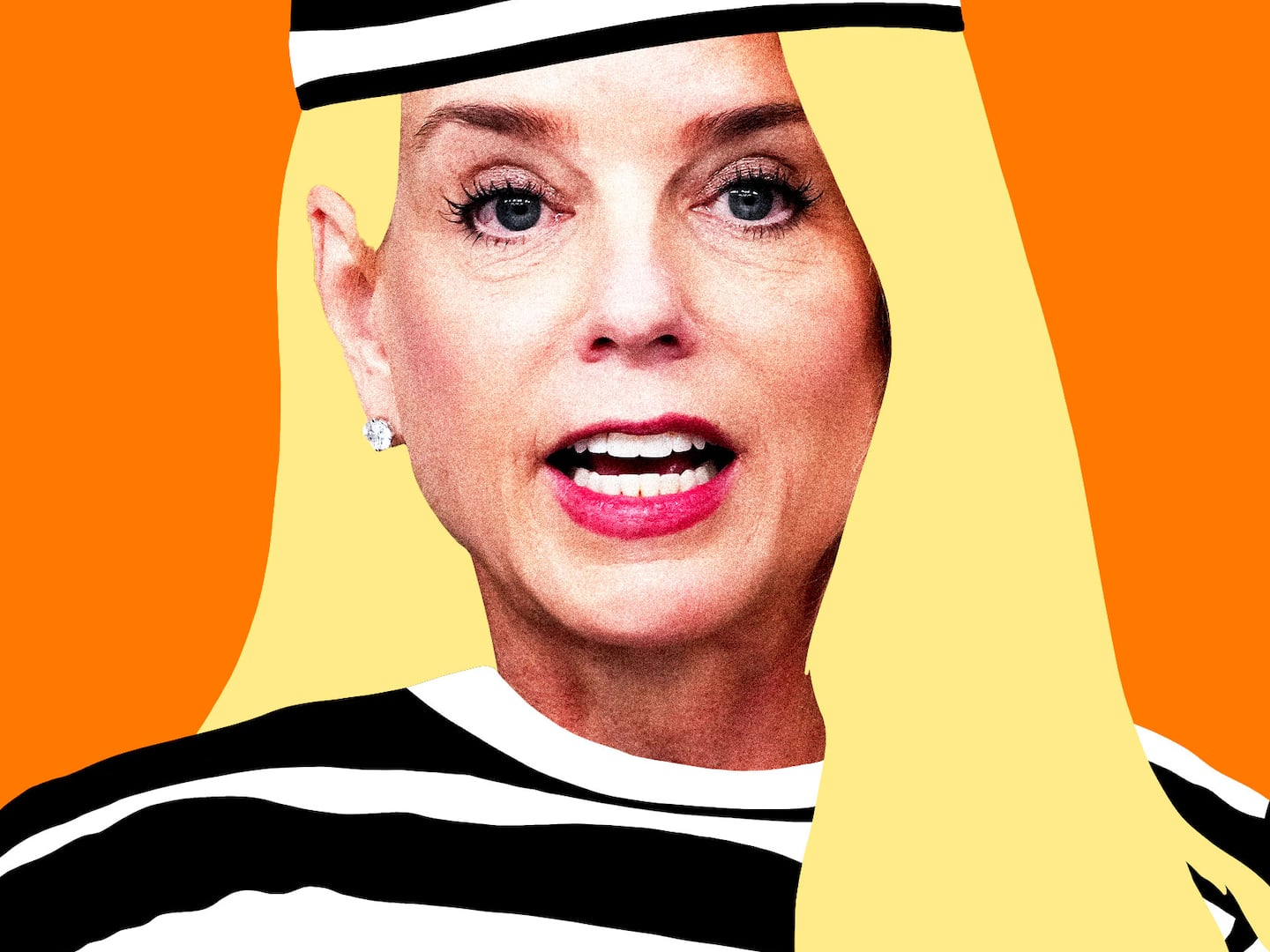The trajectory of any new artistic genre—oil painting, the novel, video installation—is almost always to improve, or at least grow more inventive. Except in those rare cases when it might not. Edward Gorey, in one of his more esoteric opinions, once argued that cinema had reached its zenith before 1919. While it’s hard to agree, it’s equally hard not to concede the point at least a little once you’ve experienced some of that early riotous creativity. Another exception is the medium of newspaper comics, where two of the most towering peaks in the form date from before 1930: George Herriman’s Krazy Kat, the greatest tale of unrequited interspecies love and brick-throwing from any era, and Winsor McCay’s Nemo in Slumberland, possibly the most opulent feature of any kind ever to grace American newspapers and now available in an immense and immensely captivating Taschen edition, The Complete Little Nemo.
Nemo in Slumberland exists on a curious periphery of the cultural imagination; familiar enough for a charming Google Doodle but not quite for general awareness. Nemo is a flagrant favorite of many current artists from Alan Moore to Chris Ware to Neil Gaiman, but his broader impact is regrettably limited. There’s a 1989 Japanese animated feature collecting dust on VHS shelves. Tom Petty’s “Running Down a Dream” video borrows liberally from the strip. The name “Little Nemo” is often vaguely familiar even if its origins usually aren’t. So it’s difficult to call a $200 art book that boasts an Amazon shipping weight of 18.3 poinds a breakthrough for popular consumption. All that said, this is still the best opportunity to examine the strip literally since its original publication in the first decades of the last century, and given the relatively unknown quality of newsprint during the Taft administration, this may in fact be the best chance ever.
The story is simple. Every Sunday Nemo falls asleep and his dreams take him to the wondrous land of Slumberland, a place where anything can happen and often does, up until the final panel, where like Dorothy or Alice, he wakes up again in his familiar American bed. What happens in between is limited only by the endless possibilities of the dreamworld, as Nemo wanders around the fantastical Slumberland, the realm of King Morpheus, “the god of night, inventor of sleep.” Landscapes change and disappear, individuals replicate and multiply, columns become trees, lakes drain, bathtubs become swirling seas, a cavern becomes a mouth, humans float, the ice skating rink is revealed as Grandpa’s head, and much more.
As Maurice Sendak, who declared Nemo the inspiration for his own In The Night Kitchen, wrote in the introduction to John Canemaker’s McCay biography, “An elaborate and audacious fantasy, Little Nemo is, in effect, a giant childrens book, though no more limited to children than Alice in Wonderland, the Grimm tales, or any of the best books for children. Nemo’s dreams, like Alice’s, have the unquestionable ring of veracity. In McCay’s Slumberland, as in Wonderland, irrational taboos, forbidden places, and terrifying creatures confront Little Nemo at every turn. But Nemo, unlike Alice, is afraid. He has none of her nimble wit and maddening pugnaciousness. He is dubious, suspicious, very much a miniature Buster Keaton ogling a hostile universe.”
He is not alone—there’s the Princess, who originally summoned Nemo, King Morpheus himself, the stuffy Doctor Pill. Countless plots are driven by Flip, a cigar-chomping, green-faced troublemaker who the residents of Slumberland scheme endlessly scheming to keep out. Flip is determined, and his uncle happens to control the sun, and thus poses real temporal challenges to Slumberland. Imp, a stock caricature of an African savage, is introduced later, a better-intentioned source of mayhem.
It’s mainly the quality of art that astonishes in Nemo in Slumberland. McCay’s trademark style of heavy initial lines combined with lighter inner details furnishes a world both of endless impossible plasticity—towering policemen and immense turkeys—and concrete grandeur: Slumberland’s palaces would elicit the envy of any architectural draftsman.
McCay was a child of the Midwest—born in Spring Lake, Michigan, he spent a spell in Yspilanti Business College before working as an illustrator in Chicago and then Cincinnati, laboring for advertisers, dime museums, and eventually the Cincinnati Enquirer. His first comics work was illutrating Kipling’s Just So Stories. Before long, his talent attracted broad attention and won him a job in the journalistic bigtime at the New York Herald.
McCay arrived in turn of the century New York in the halcyon days of its newspaper competition, landing at James Gordon Bennett Jr.’s New York Herald, the third pugilist in William Randolph Hearst and Joseph Pulitzer’s bruising newspaper wars. Eager for readers, publishers were ready and willing to throw cash at any easy means of boosting subscriptions, and comics supplements seemed exactly that.
Here McCay launched upon a career of prodigious productivity. While it’s been an occasional sight in recent years to see artists attached to several sequential strips, they’re usually associated in fame only with one, and even the most notable exception—Berkeley Breathed’s journeys from Bloom County to Outland to Opus—uses the same set of characters. McCay launched a dizzying range of separate strips: Little Sammy Sneeze and Dream of the Rarebit Fiend in 1904, and his masterpiece, Nemo, in 1906. McCay’s output was frenetic: at his peak he was producing four cartoons for three separate comics weekly—and soon venturing into vaudeville appearances and animated films with several of his characters.
His career took a still more curious turn when hired away from the Herald by William Randolph Hearst in 1911, where he promptly resumed Nemo under the name In the Land of Wonderful Dreams. The copyright arrangement was so limited that it applied only to the name; the characters were free to travel with him, and did. Then, still more strangely, McCay was detailed expressly to editorial cartooning (Imagine a world in which Bill Watterson started drawing magisterial op-ed cartoons for the Cleveland Plain Dealer in 1995). Ultimately, McCay returned to the recently conjoined Herald-Tribune in 1924 and resumed the originally-titled Nemo for a two year valedictory run.
Nemo’s original Herald tenure is the unquestionable peak of the series, although the later installments remain reliably beautiful and feature occasionally striking installments.
Dialogue, if often crisp, isn’t the main attraction for McCay (if you’re looking for verbal poetry, try Krazy Kat). McCay’s grasp of the language of advertising and signage is mordant and superb, but mainly, his sheer inventiveness at creating visual dreamworlds is unparalleled. Both tendencies combine in a journey to the Urinetown-prefigurative hypercommercialized Planet of B. Gosh, where literally everything must be purchased, including words.
PRICE LIST OF COMMON WORDS
HELLO. WHAT. YES. NO. WHY. FOR. SEE. ETC. HOW. ENOUGH. MUCH. HOME. BABY. WIFE. GIRL.
Get Price List of new Slang words just out
No Cuss Words sold to minors
“How does it come that he owns and sells words, Mr Secretary?”
“You see, only people who have money can talk. Unless you buy them you cannot use words.”
Air itself is a commodity, and as is usual with capitalist dystopias, those living at lower levels can “barely pay for a license to live.” A sign at the lower levels: “Abandon Hope, All ye who try to enter here without the price.”
The strip features, most importantly, metanarrative commentary that seems astonishingly early in the history of the American comic strip. Flip early observes “I’m not one of those Sunday supplement kids that play tricks on people.” An early arrival to Slumberland in the strip sees the horizon bare; giants gradually fill in the landscape with buildings. The characters, hungry in one strip and lacking for food, blame the artist—and proceed to reach up and eat the title letters, and then complain of indigestion from the printer’s ink. Figures step out from an advertisement and are chided “you are only paper, you must stay on this card” Flip at one point declares that he can draw well,just before the characters begin to slide into childlike scribbles. The frequency of experiment frankly declines in later strips but one late example shines. The strip appears in black and white, to immediate complaints “Hey, Mr. Colorman! Can’t we have some color on us? Have you run out of ink?” Color is injected sputteringly and in stages, in an illustration of the 4-color printing process—-as demanded by the characters themselves.
McCay’s work has become the subject of much-deserved critical attention, including most recently, the accompanying volume in the Taschen boxed set, written by comics expert and art historian Alexander Braun, and Katherine Roeder’s Wide Awake in Slumberland: Fantasy, Mass Culture, and Modernism in the Art Of Winsor McCay, which examine the influence of early cinema, advertising, window dressing, psychology, photography, and a realm of other forces. As Sendak noted, though, a child’s enjoyment would suffer none for lack of this. The only real regret, as with most dreamworlds, is that you ever have to leave. As one character comments about Nemo, “He is a good fellow, I wish he was real.”






